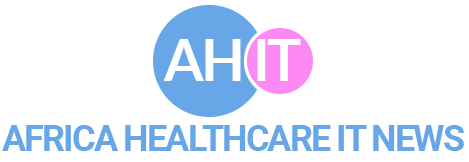SAP and Converge Solutions deliver powerful healthcare solutions for African hospitals. Converge’s SAP solution is Fresenius Medical Care, which has deployed it as a key building block in enabling its World Class Patient Experience vision.
The solution is centrally deployed in a private cloud environment and used across Fresenius’ 67 clinics in South Africa and Swaziland, as well as Namibia.
Complex business models, combined with immense pressure to deliver great patient experiences and outcomes, has African healthcare providers turning to technology to improve their operational efficiency and automate back-office operations.
This task is now far less daunting with the launch of a new technology platform designed by Converge Solutions and the SAP Co-Innovation Lab specifically for the African healthcare market.
“Healthcare providers are under increasing pressure to deliver improved patient experiences and streamline their operations with mounting financial constraints,” said Johann Joubert, CEO at Converge Solutions. “The answer to affordable, improved patient care is not always more staff, controls or administrative processes, but greater adoption of technology that aids automates and simplifies, allowing more effective use of available resources.
“Modern healthcare organisations simply cannot function optimally without applying technology as a key enabler of their operations. In light of this, we co-developed an innovative, modern SAP IS-H and Cerner i.s.h.med offering to create a fit-for-purpose solution for the African healthcare market.”
Converge Solutions is a SAP partner organisation that develops innovative solutions for African organisations in the healthcare and financial services industries. The healthcare solution was developed partly through a co-innovation exercise held in collaboration with the SAP Co-Innovation Lab, a global network of SAP product and innovation labs found in 16 locations worldwide, including Johannesburg.
The SAP Co-Innovation Lab creates a platform for local SAP partners and customers to minimise the risk associated with large-scale innovation projects built on SAP technologies and solutions.
According to Rudi de Louw, Head of the SAP Co-Innovation Lab at SAP Africa, the healthcare solution developed by Converge fills a very clear gap in the local healthcare industry’s Digital Transformation efforts.
“Working with Johann and his team, we identified a clear opportunity to offer a fit-for-purpose solution for the African healthcare market, with an initial focus on South African organisations. Thanks to the scalability of the solution through SAP’s infrastructure, and the Converge team’s expert knowledge of the African healthcare industry, it comes as no surprise to see Converge’s enhanced versions of the solution already being adopted by healthcare organisations in other African markets.”
Joubert says healthcare is an inherently complex industry.
“During the course of their stay, one patient may interact with multiple external healthcare professionals and/or entities, who deliver independent yet interrelated services to the patient,” he said.
He adds that patients also have a range of benefit structures from different medical aid schemes, with different pricing mechanisms, which adds layers of complexity.
“The key is to deploy a solution that simplifies all of this complexity, allowing a single view of the patient, with high levels of automation and sophistication, freeing up healthcare professionals to spend more time with the patient,” he said.
“There are a range of offerings in the market that are very simple to deploy and simple to use, but without the sophistication to address all of these elements effectively, forcing hospitals to throw people towards a system deficiency. Our solution doesn’t ignore these complexities, it simplifies them, with an appropriate level of control, flexibility and ease of use.”
With some other countries having a multitude of medical schemes operating, submitting medical aid claims and checking the eligibility of patient benefits for certain procedures or care can be a time-consuming administrative burden without the appropriate solutions in place.
“We integrate to Medikredit, a switching company for medical aid claims that has enabled real-time eligibility checking, among other rich functionality,” said Joubert. “Healthcare organisations using our solution can quickly check that patient benefits are still intact and that the medical aid will cover the costs. Once the service is billed, the claim can be submitted to the medical aid scheme immediately and with minimal rejections since the eligibility of the claim was performed beforehand. This integrated approach ensures a dramatically lower claim rejection rate.”
Joubert adds that a large part of the co-innovation project focused on reducing the operational complexity inherent within healthcare organisations.
“We made use of best practices, but also ensured the system is localised to serve the specific operational needs of African private sector hospitals,” he said.
“This was achieved through more than a decade of working side by side with healthcare entities to understand their pains and architect solutions, along with an active inclusion of industry thought leaders through the system enhancement process.
“We also extended the standard SAP solution by integrating our own solutions to augment what is already offered, including PatientMyth (a digital patient survey and intervention platform), Impi (a clinical incident management platform), Virtual Forms (a form digitalisation platform) and Triton (an advanced acuity based nursing planning and optimisation solution).
“We have partnered and/or integrated with a number of other leading entities including, but not limited to, Cerner, Elsevier and Medikredit.
“We are constantly evaluating and integrating other products and partners into our ecosystem to ensure that healthcare providers can source all IT related products and services from one point of accountability. Our solutions offer simplification and predictability, extending to timeline, budget, appropriate levels of sophistication and standardised levels of care, to cover all permutations of healthcare in Africa.”



